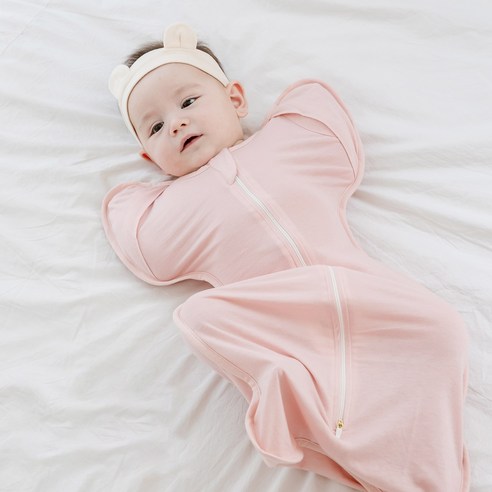Choosing the Best Swaddle for Your Baby: Material and Size Guide
Choosing the Best Swaddle for Your Baby: Material and Size Guide
Introduction
Swaddling is a time-tested technique that provides comfort and security for newborns, helping them sleep better and feel calmer. Choosing the right swaddle for your baby involves understanding the ideal material and size to ensure safety and effectiveness. In this blog, we’ll discuss the best materials for swaddle blankets, the appropriate size for different ages, and tips for making the most of your baby’s swaddling experience.
1. Why Is Swaddling Important?
Swaddling mimics the snug environment of the womb, which helps babies feel safe and secure. Here’s why swaddling is beneficial:
- Promotes Better Sleep:
- Reduces the startle reflex (Moro reflex) that can wake babies.
- Provides Comfort:
- Helps calm fussy or colicky babies.
- Encourages Safe Sleeping:
- Keeps babies on their backs and reduces the risk of loose blankets in the crib.
To maximize these benefits, choosing the right material and size is crucial.
2. Best Materials for Swaddle Blankets
The material of the swaddle plays a key role in your baby’s comfort and safety. Here are the top materials for swaddling:
A. Cotton
- Why It’s Ideal:
- Soft, breathable, and lightweight.
- Gentle on a baby’s sensitive skin.
- Suitable for year-round use.
- Popular Types:
- Muslin cotton: Lightweight and perfect for warm climates.
- Organic cotton: Free from chemicals, ideal for eco-conscious parents.
B. Bamboo
- Why It’s Ideal:
- Ultra-soft and silky texture.
- Naturally breathable and temperature-regulating.
- Antibacterial and hypoallergenic properties.
- Best For: Hot climates or babies with sensitive skin.
C. Fleece or Flannel
- Why It’s Ideal:
- Warm and cozy, perfect for colder months.
- Slightly thicker material provides extra comfort.
- Best For: Winter or chilly environments.
- Caution: Avoid fleece if your baby tends to overheat.
D. Stretchy Fabrics
- Why It’s Ideal:
- Materials like spandex or jersey knit allow flexibility for snug swaddling.
- Provides a gentle stretch, making it easier to wrap securely.
- Best For: Active babies who wiggle a lot.
E. Wool or Merino Wool
- Why It’s Ideal:
- Naturally regulates temperature to keep your baby comfortable in any season.
- Soft and breathable.
- Best For: Babies in regions with varying temperatures.
- Caution: Ensure it’s ultra-soft and non-itchy to avoid skin irritation.
3. Choosing the Right Swaddle Size
Selecting the correct size ensures your baby is comfortable and securely wrapped. A swaddle that is too small can be restrictive, while one that is too large can pose safety risks.
A. Standard Swaddle Blanket Sizes
-
Small/Newborn (0–3 Months):
- Size: 28 x 28 inches (71 x 71 cm) to 32 x 32 inches (81 x 81 cm).
- Best For: Newborns and smaller babies who require a snug fit.
-
Medium (3–6 Months):
- Size: 36 x 36 inches (91 x 91 cm).
- Best For: Babies growing out of their newborn stage but still benefiting from swaddling.
-
Large (6+ Months):
- Size: 40 x 40 inches (102 x 102 cm) or larger.
- Best For: Bigger babies who need extra room for movement or transitioning out of swaddling.
B. Pre-Made Swaddles
- Pre-made swaddles with Velcro or zippers are often sized by weight and age.
- Examples:
- Small: 5–12 lbs (2.2–5.4 kg).
- Medium: 12–18 lbs (5.4–8.1 kg).
- Large: 18–24 lbs (8.1–10.8 kg).
C. Key Considerations for Size
- Room for Hips: Ensure the swaddle leaves enough space for the baby’s hips and legs to move freely to prevent hip dysplasia.
- Snugness: The swaddle should be snug around the arms but not too tight across the chest.
4. Tips for Choosing and Using Swaddles
To make the most of your swaddling experience, follow these practical tips:
A. Consider the Season
- Warm Weather: Use lightweight materials like muslin cotton or bamboo.
- Cold Weather: Opt for thicker fabrics like fleece or flannel.
B. Monitor Your Baby’s Comfort
- Signs of Overheating:
- Sweating, flushed cheeks, or damp hair.
- Use breathable materials and avoid overdressing your baby.
- Signs of Discomfort:
- Persistent fussiness or struggling against the swaddle. Adjust the fit or fabric.
C. Transitioning Out of Swaddling
- Stop swaddling when your baby starts rolling over (usually around 4–6 months).
- Use a transitional sleep sack or wearable blanket to ease the transition.
D. Follow Safe Sleep Guidelines
- Always place your baby on their back to sleep.
- Ensure the swaddle is secure but not too tight around the chest or neck.
- Avoid loose ends that could pose a choking hazard.
5. Conclusion
Choosing the right swaddle for your baby involves selecting a material that suits their skin and environment, along with the appropriate size for their age and weight. Whether you prefer soft muslin for summer or cozy fleece for winter, the right swaddle can make a significant difference in your baby’s comfort and sleep quality. By following the tips in this guide, you can create a safe and soothing sleep environment for your little one.
Call to Action
What’s your favorite swaddle material or brand? Share your experiences in the comments below! For more parenting tips and baby care advice, follow this blog.





Comments